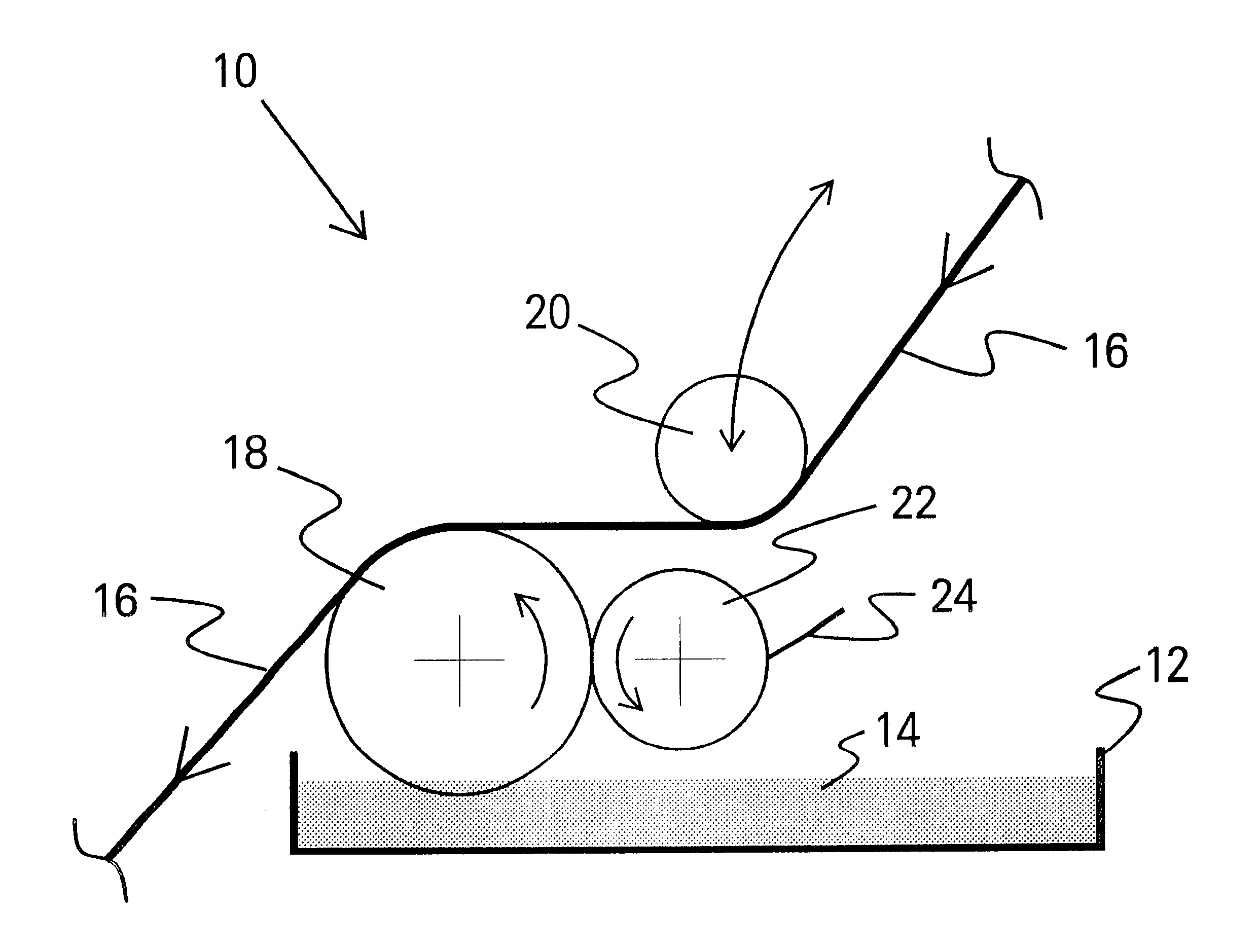Light fastness of inkjet images by adding salts into inkjet media
a technology of inkjet images and salts, which is applied in the field of light fastness of inkjet images by adding salts into inkjet media, can solve the problems of dyes that are very poor stable when exposed to light, can form defects in topcoats, and form bubbles in topcoats, etc., and achieve the effect of improving light fastness
- Summary
- Abstract
- Description
- Claims
- Application Information
AI Technical Summary
Benefits of technology
Problems solved by technology
Method used
Image
Examples
example 1
The salt solution was applied to the print media in the media coating process. In this instance, the current coating had two layers (basecoat and topcoat, as described above). The basecoat was coated on the medium and then dried; the topcoat was coated after rewetting the basecoat. The additive salt (potassium or sodium iodide, sodium or potassium thiosulfate, and / or sodium thiocyanate) was included in the re-wet solution, as described above.
The paper was printed with an ink-jet ink set having the formula given in Table I below.
Table II below shows the test results of light fastness measured on paper treated with a thin film of the re-wet solution, which contained 0.01 M of KI (potassium iodide) and 1.01 M of Na.sub.2 S.sub.2 O.sub.3 (sodium thiosulfate) (called "IT" additives). The measurement is in terms of optical density (OD), measured on a X-RITE 938 spectrometer. The optical density was measured before and after exposure of the printed regions to light. The light exposure was ...
example 2
The following Table III sets forth a comparison of the combination of (1) both ink and media containing the additive and (2) both the ink and media without the additive. In the first case, the ink included 0.5 wt % KI plus 4 wt % sodium thiosulfate and the media was treated with a re-wet solution containing 1.01 M sodium thiosulfate. The last two columns list the percent OD loss from the initial OD.
The ink set was the one listed in Table I, but with the addition of the additive, as noted above. The light fastness was measured on an H-P fadeometer, having an intensity of 58 to 70 Klux, for 72 hours. The OD was measured prior to and subsequent to the light exposure. The OD loss was determined by the ANSI standard IT 9.9 method (1996).
For black, cyan, magenta, and yellow, the lower the value of OD loss, the better the light fastness. For blue, green, and red, it is important to have uniform color as the sample fades. For these colors, the difference between the two primary colors is me...
example 3
A series of tests were performed in which (1) the ink was devoid of the additive and the media was untreated; (2) the ink was devoid of the additive and the media was treated with (a) potassium thiosulfate, (b) potassium iodide, (c) sodium thiosulfate, and (d) sodium iodide; and (3) the ink contained sodium thiosulfate and the media was treated with one of the four additives (a)-(d).
The ink contained 4 wt % sodium thiosulfate. The paper was treated with a pre-wet solution containing 4 wt % of one of the additives (a)-(d).
The ink was the same base composition as in Example 1, and the print medium was the same as in Example 1. The measurement of light fastness was the same as in Example 2.
The results are shown in Table IV below. In Table IV, a color followed by a letter (e.g., "Red M") indicates the component for that color, where M is magenta, Y is yellow, and C is cyan. (Red comprises magenta and yellow; green comprises cyan and yellow; and blue comprises cyan and magenta.) Thus, th...
PUM
| Property | Measurement | Unit |
|---|---|---|
| OD loss | aaaaa | aaaaa |
| permeable | aaaaa | aaaaa |
| solvent | aaaaa | aaaaa |
Abstract
Description
Claims
Application Information
 Login to View More
Login to View More - R&D
- Intellectual Property
- Life Sciences
- Materials
- Tech Scout
- Unparalleled Data Quality
- Higher Quality Content
- 60% Fewer Hallucinations
Browse by: Latest US Patents, China's latest patents, Technical Efficacy Thesaurus, Application Domain, Technology Topic, Popular Technical Reports.
© 2025 PatSnap. All rights reserved.Legal|Privacy policy|Modern Slavery Act Transparency Statement|Sitemap|About US| Contact US: help@patsnap.com


